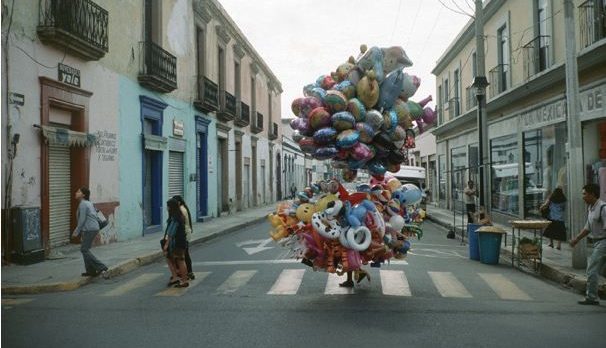

Leon Spilliaert, Woman at the Shoreline, 1910
“Inhale, exhale. Walk the paths of logic. Every outcome has its cause, and every predicament has its solution. Every lock has its key.” – Anthony Doerr, All the Light We Cannot See
On October 16, 1843, while walking along the banks of the Royal Canal towards Dublin, Irish mathematician William Rowan Hamilton had a sudden flash of insight, leading to a breakthrough discovery in mathematics. “An electric circuit seemed to close; and a spark flashed forth,” he wrote in a letter to his son Archibald, before describing how unable to resist the impulse, he took out his penknife and scored the fundamental formula for the quaternion multiplication (i2 = j2 = k2 = ijk = −1) onto a stone on Brougham Bridge.
It’s a story we’ve heard before: an epiphany moment which strikes at random in the midst of some mundane task. One of the most iconic examples from history is Isaac Newton discovering the laws of gravity while sitting beneath an apple tree. But for Hamilton and countless others, walking was (and is) a powerful conduit for new ideas – and it’s why so many writers and thinkers incorporate walking into their daily practice.
ArrayNietzsche was a prolific walker. When writing The Wanderer and His Shadow, he walked alone for up to eight hours a day, stopping every now and then to scribble notes en route.
In fact, the whole book (save for a few lines) was conceived while walking; Hemingway walked to overcome creative blocks. “I would walk along the quais when I had finished work or when I was trying to think something out,” he wrote in The Moveable Feast. “It was easier to think if I was walking and doing something or seeing people doing something that they understood”; poet Mary Oliver stashed pencils in the trees along her habitual walking routes, in case an idea came to her unexpectedly; and every day at 1pm sharp, pianist Benjamin Britten dropped whatever he was doing to go walking in the Suffolk countryside, absorbing the soundscape of nature. “The actual writing on paper is not the moment of inspiration,” he once remarked. “I do 99 per cent of my work thinking about it – walking and so forth.”
From all these anecdotes one thing is clear: walking and thinking go hand in hand. For many, walking is the work. “It was not just that walking was a distraction from their work,” says Frédéric Gros, author of A Philosophy of Walking in an interview with The Observer about walker-philosophers. “It was that walking was really their element. It was the condition of their work.”

Don McCullin, Consett, County Durham, 1974, Tate
But what makes walking so conducive to thinking? Chemistry offers us some answers. As more oxygen is channeled to the brain, walking alters the chemistry of our bodies heightening our awareness and sending more blood flow to the brain in a way that offsets the effects of sitting around.
“A simple, collateral effect of rising and moving is that activity spreads across more distant brain regions – increasing the likelihood that half-thoughts and quarter-ideas sitting below consciousness can come together in new combinations,” explains Shane O’Mara in his book In Praise of Walking.
“It is a peculiar and wonderful creative problem-solving state comparable in many ways to that which can arise at the edge of dreaming, and even during dreaming itself,” says O’Mara. “The characteristics of dreaming, the loss of meaning of time, the experience of reverie, the free association involved between differing memories and thoughts, might still, in part be created by walking.”

M. C. Escher, Hand with Reflecting Sphere, first printed in January 1935
In the past, epiphanies were believed to be of divine origin, transmitted from some external entity.
But in terms of creativity, epiphanies or breakthroughs don’t materialise out of nowhere – instead they’re the result of multiple elements coming together: prior knowledge, subjective experience and often, many hours of dedicated work. Walking is just something we can do to shake up this process.
One way to think of it is to picture a snow globe. When it’s sitting still on your desk, everything inside is static. But once shaken its contents instantly disperse, creating a snowstorm behind the glass, making the fragments settle in new formations. It’s not the perfect analogy, but that’s how my mind feels when I walk.

Francis Alÿs, detail from Ambulantes (1992-2006), 160 35mm slides
The pace we walk can also influence our capacity to think. The optimum pace for reaching the flow-like mental state O’Mara describes above, seems to be a slow stroll (halfway between a normal stroll and the kind of walking pace that induces pavement rage from others).
We all think and walk at different speeds, but by slowing down our attention and awareness are heightened. Daniel Kahneman, author of Thinking Fast & Slow says: “Accelerating beyond my strolling speed completely changes the experience of walking, because the transition to a faster walk brings about a sharp deterioration in my ability to think clearly.”
Kahneman also notes that walking might only aid with certain types of problem-solving, i.e. ones that don’t put a heavy load on short-term memory: “While walking comfortably with a friend, ask him to compute 23 x 78 in his head, and to do so immediately. He will almost certainly stop in his tracks.”

Marina Abramović and Ulay, The Lovers – The Great Wall Walk, 1988. The lovers/collaborators of 13 years started walking towards each other from opposite sides of the Great Wall of China. After 90 days and 1,200 miles behind each of them, they met in the middle and parted forever.
Solvitur Ambulando isn’t just limited to creative and logical problems. Putting one step in front of the other can have a powerful healing effect, helping us process challenging emotions. In her book Overlay: Contemporary Art and the Art of Prehistory, Lucy Lippard mentions an Eskimo custom, which “offers an angry person release by walking the emotion out of his/her system in a straight line across the landscape; the point at which the anger is conquered is marked with a stick, bearing witness to the strength/length of the rage.”
In a similar way, labyrinths symbolise how walking can be a means of internal problem-solving – the destination being not a physical place, but a more tranquil mental state. While different theories about their use and origin exist, the true meaning of labyrinths remains obscure.
Unlike mazes, they’re not designed to deceive; they have a single unicursal path with one way in and out. You can’t get lost in a labyrinth. Walking one can be therapeutic for the walker, especially if they enter with a question or problem on their mind that they want solved.

Guy Debord, The Naked City, 1957. (Illustration of the hypothesis of psychogeographical hubs), Paris
While the inward labyrinth journey allows time for examining the question, the way out may provide answers for a potential solution. Both kinesthetic and introspective, the labyrinth walk helps the mind integrate with the body.
Last year I had to give a presentation in Oxford, and as someone who despises public speaking this was my idea of hell. Arriving on the train from London with an hour to kill, I took a walk around the town and came across a labyrinth garden. As I walked, I remember how my steps were timed to each second like a fatal countdown, and while it sounds the opposite of soothing (the sound of time a constant reminder of mortality and in my case in Oxford, impending doom), I felt a strong sense of groundedness. All the paralysing nervous energy was cured by that walk and I remember going into the presentation with a renewed sense of purpose and confidence.

Teching Hseih, One Year Performance Statement, 1981, New York City
In her book Wanderlust, Rebecca Solnit recalls her own experience of a labyrinth walk at Grace Cathedral in San Francisco (also stumbled upon by chance): “That circle became a world whose rules I lived by, and I understood the moral of mazes: sometimes you have to turn your back on your goal to get there, sometimes you’re farthest away when you’re closest, sometimes the only way is the long one… after that careful walking and looking down, the stillness of arrival was deeply moving.”
In the end, it doesn’t really seem to matter whether you’re walking a straight line through the arctic tundra, or tracing the paths of a labyrinth in rural England; wandering alone in a city of 20 million people or trekking on a remote coastline – it’s merely the act of walking that counts.
Ironically, for this piece I had monumental writer’s block, maybe because I was writing about walking and thinking and walking every day to think about walking and thinking (it all got very meta…). Yet I found that while walking certainly helps me think clearer, you can’t demand too much of the walk. You have to go in with no expectations, allow yourself to let go and receive whatever comes to you.

Vincent Van Gogh, Shoes, 1888




